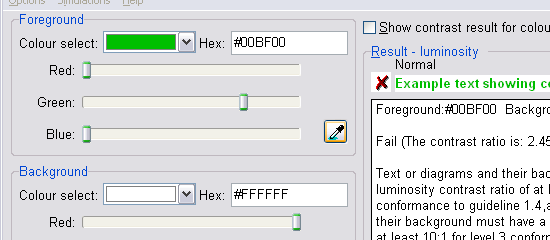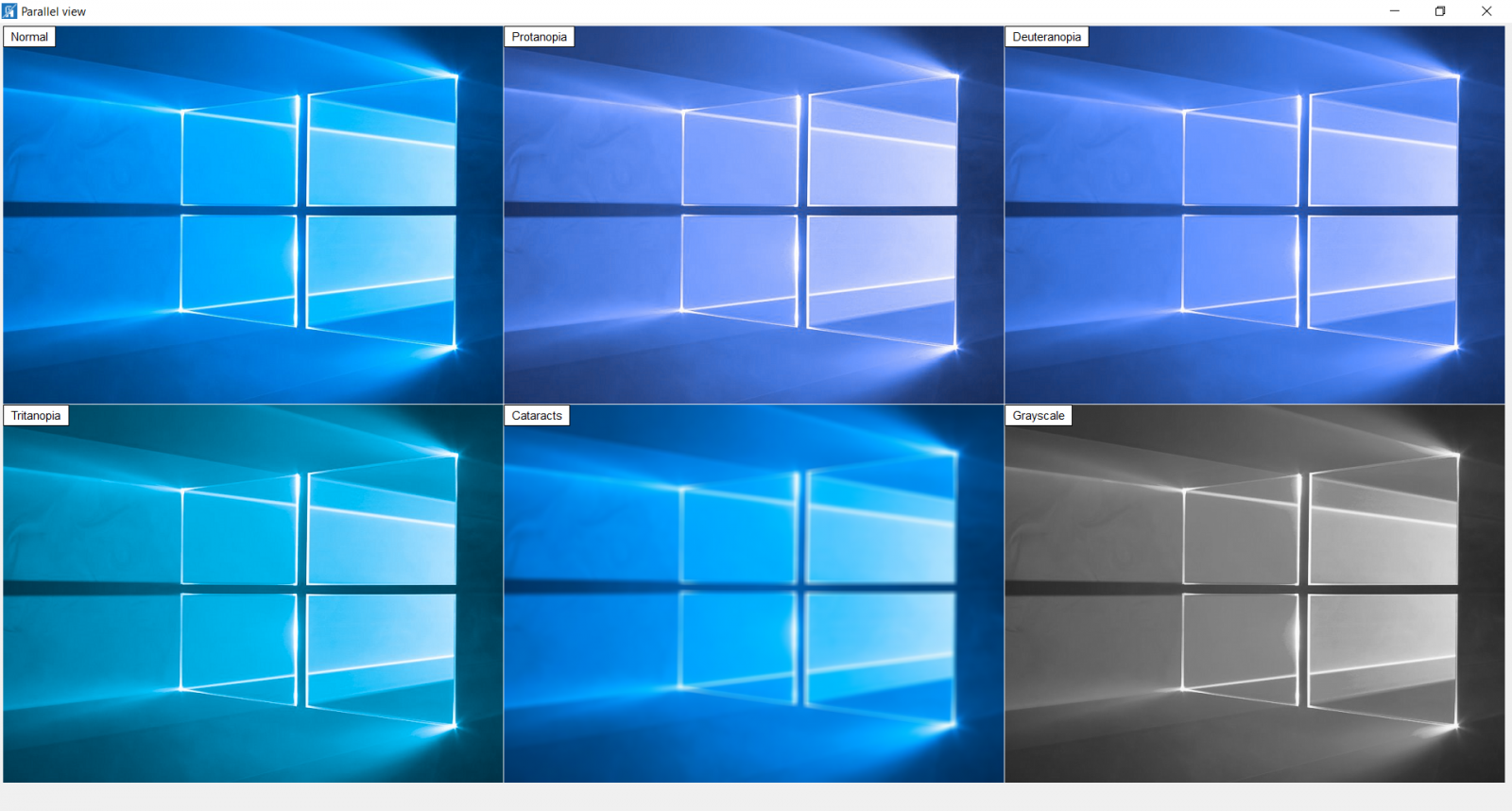

These icons follow the color contrast ratio recommendations and are more legible against their backgrounds Use a contrast checker, such as the WebAIM Color Contrast Checker, to ensure that your screens meet the contrast requirements.įor more details of how contrast ratios apply to specific UI elements, see Design for Driving guidelines. App colors must meet the WCAG 2.0 Level AA Normal Text contrast requirements, which specify a contrast ratio of 4.5:1). Minimum visual contrast between the foreground (text or icons) and background (colors, album art, etc.) is required for legibility while driving.
Colour contrast analyser multi screen how to#
Semi-transparent white values are mostly used for text, especially when the background is colored, instead of using solid gray.įor examples of how to use opacity in scrims and text hierarchies, see Guidance and examples.Īppropriate color contrast helps drivers quickly interpret information and make decisions. The most common use case for semi-transparent dark surfaces is a scrim (also known as an "overlay"). To use it effectively, choose an opacity level based on your use case. The Material Design spatial model relies on varying degrees of opacity to convey a sense of depth in a UI.
Colour contrast analyser multi screen android#
The blue “car accent” color in Android Auto is more saturated than the standard Google blue, designed to work well in the dark-themed interface during both day and night driving. This blue has increased saturation and vibrancy from the standard Google blue for better visibility on the UI's dark surface. In addition to Android Auto's grayscale palette, an accent color can be used sparingly for purposes such as drawing user focus.Ĭurrently, Android Auto has one official accent color, a shade of blue referred to in the support library as "car accent". This chart shows the gray values associated with various elevation levels for day and night mode. Each resting elevation level for various components is associated with a unique gray value. It's a more gradual progression of grays than Material Design's baseline color palette, as Material's shades below Gray 900 are too bright for the auto context. To provide sufficient contrast between these components, the Android Auto grayscale palette contains a wide range of grays. Each shade represents a different level of elevation, where components with darker shades (such as the list component) have less elevation than components with lighter shades (such as floating action buttons).Īll components are displayed on a true black background where shadows aren't visible. In Android Auto, a sense of depth is expressed using different shades of gray. This grayscale palette is the default Android Auto color palette, supporting the dark theme of the interface.

Reflect each UI element's level of hierarchy with the provided range of shades.Using the Android Auto grayscale color palette, you can apply color to all elements, including text and icons.


 0 kommentar(er)
0 kommentar(er)
